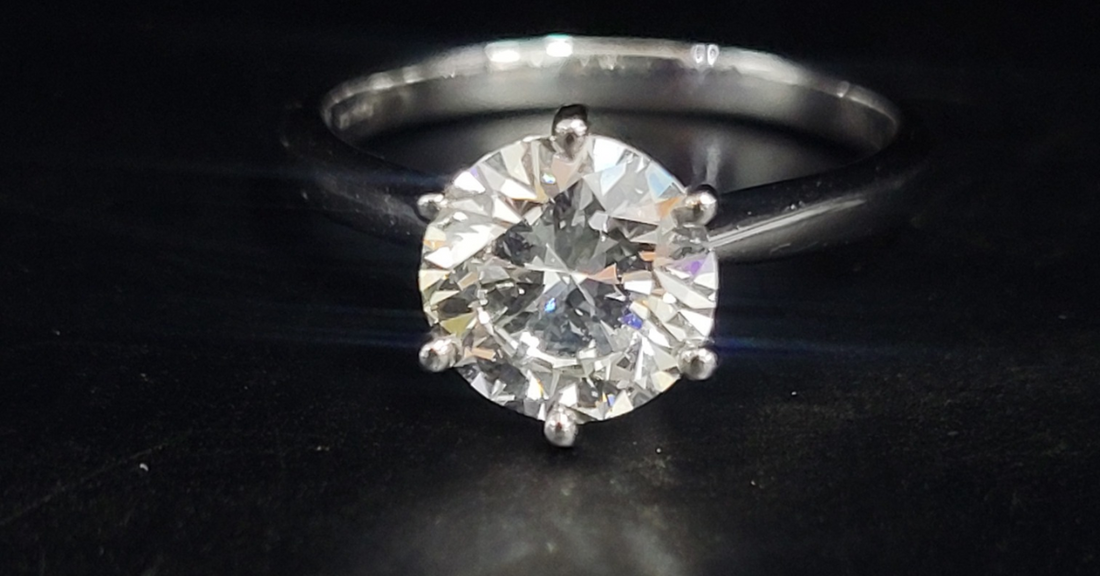
Things to Know Before Buying a Solitaire Diamond
Share
Buying a solitaire diamond is an exciting and significant investment. Whether it’s for an engagement ring, a special anniversary, or a timeless statement piece, you want to make sure your purchase is informed, valuable, and meaningful.
In this guide, we’ll break down exactly what a solitaire diamond is, how it differs from a standard diamond, and the most important things you should know before buying one.
What is a Solitaire Diamond?

A solitaire diamond refers to a single diamond set on a piece of jewellery, usually a ring, pendant, or pair of earrings. The term “solitaire” comes from the French word for “alone,” reflecting the single-stone design.
While a solitaire diamond can come in many shapes—round, princess, oval, emerald—the most popular cut for engagement rings is the round brilliant cut due to its maximum sparkle and symmetry.
What is the Difference Between a Solitaire Diamond and a Diamond?
The difference lies in the setting, not the stone itself. A diamond refers to the gemstone, while a solitaire diamond refers to how the diamond is presented—alone, without any other surrounding stones.
For example:
-
A diamond could be part of a halo ring surrounded by smaller stones.
-
A solitaire diamond stands alone, allowing all attention to be focused on its beauty.
The solitaire design is loved for its elegance and ability to showcase the diamond’s quality without distraction.
Things You Should Know Before Buying a Solitaire Diamond Ring

When buying a solitaire diamond, there are several key factors that can greatly influence its beauty, value, and overall satisfaction.
1. Understand the 4Cs
The 4Cs—Cut, Colour, Clarity, and Carat—are the universal standard for grading diamonds.
-
Cut – Impacts brilliance. Excellent or Very Good cuts are ideal.
-
Colour – Ranges from D (colourless) to Z (light yellow or brown). Aim for near colourless grades (D–H).
-
Clarity – Measures inclusions or blemishes. VS1 and above offer great visual purity.
-
Carat – Refers to weight. Larger carats often cost more but cut quality matters more for sparkle.
2. Choose the Right Shape for Your Style
Round is the most popular, but shapes like oval, cushion, or emerald cuts offer unique elegance. Some shapes may appear larger than others of the same carat weight due to their dimensions.
3. Pick the Perfect Setting
The setting can enhance the beauty of a solitaire diamond:
-
Prong Setting – Classic and allows maximum light entry.
-
Bezel Setting – Sleek, modern, and protective.
-
Tiffany Setting – Iconic six-prong design that elevates the diamond.
4. Set a Realistic Budget
Solitaire diamonds can vary greatly in price depending on the 4Cs. Decide what matters most to you—size, brilliance, or colour—and balance your budget accordingly.
5. Consider Certification
Always buy a certified diamond from a recognised lab like GIA or AGS. Certification verifies authenticity and ensures you’re getting exactly what you paid for.
6. Inspect Before Purchase
If possible, view the diamond in person or request high-resolution videos from online sellers. Look at it under different lighting conditions to judge sparkle and clarity.
7. Think About Long-Term Care
Solitaire diamonds, being the focal point of the ring, need regular cleaning to maintain their brilliance. Schedule professional cleanings and store them safely when not in use.
Conclusion
A solitaire diamond is more than just a gemstone—it’s a timeless symbol of elegance, commitment, and refined taste. By understanding what sets it apart from other diamond styles, learning the importance of the 4Cs, and making informed decisions on shape, setting, and budget, you can ensure your solitaire diamond remains a treasured piece for a lifetime.
FAQ’s
Is a solitaire diamond more expensive than a regular diamond?
Not necessarily—the price depends on the 4Cs. However, solitaire settings often require higher-quality stones since there are no other diamonds to draw attention away.
What is the best cut for a solitaire diamond?
Round brilliant cuts are the most popular for their sparkle, but other cuts like oval or emerald offer distinctive elegance.
Can I get a solitaire diamond in a coloured gemstone?
Yes, although the term “solitaire” traditionally refers to diamonds, the same setting can be used for sapphires, emeralds, and rubies.
How do I know if my solitaire diamond is real?
Always ask for certification from reputable labs and buy from trusted jewellers.
